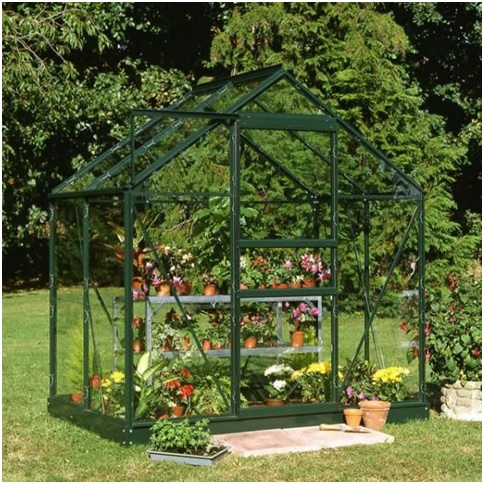Space shouldn’t affect your love for farming. As it happens, you can still get a generous harvest on limited space. And you can boost production by having a greenhouse in your limited space.
The best part of building a greenhouse is the size of your space doesn’t matter. Therefore, with a great plan, the right tools, and time, you can enjoy fresh produce all year round. Surprisingly, the process of building a mini-green house isn’t too hard.
Most greenhouses are easier to build on smaller spaces since they come as a kit. For that reason, all you’ll need to do is assemble it in a matter of hours. However, for a custom build, you’ll have to construct it from scratch. But before choosing a greenhouse for your space, you might need to consider the different types of greenhouses.
Types Of Greenhouses
Although there are different types of greenhouses, three of these are the most popular styles when dealing with limited space.
South West Greenhouses recommends you measure the space for your greenhouse first, as it’s very common for people to underestimate how large the greenhouse is with the extra foundation work.



The three most popular styles are as follows:
• Attached
This greenhouse is built against a sturdy wall during construction. This wall could be a house and actas an anchor for your structure. With attached greenhouses, you can choose a greenhouse as small as a box or as large as the wall against which you intend to mount it.
• Cold Frame
Perhaps the smallest and simplest greenhouse— consists of small boxes with hinged lids. Cold frames are usually used during winter to protect plants against withering. However, they don’t have a heat source like other alternatives.
• Freestanding
If you’re looking for a large enough greenhouse to enter, this type is a great option. The building process of this greenhouse is more complex and sturdier enough to stand on its own. As such, this type is usually the more expensive option.
Regardless of the type of greenhouse you settle for, you’ll still need to set it up. So, if you enjoy the DIY route, here’s a simple guide on how to build a greenhouse, regardless of the space available.
1. Estimate The Size Of the Space You Have
The first step of building a greenhouse is measuring the space you have. Establishing the size of your limited space will play a vital role in choosing a greenhouse plan. This way, you’ll have sufficient room to carry out your design. As such, when estimating the size of your space, use a tape measure to see how much space you’ll need and how much is available.
2. Choose A Plan
Depending on the type of greenhouse you choose, numerous plans are available if you want to build it. You can work off of these plans that offer directions on making your desired greenhouse style.
These plans include diagrams, photos, illustrations, written instructions, tools, and materials. So, with everything you need to build your greenhouse, decide on the size to make it accurate.
3. Seek Authorization
Before starting the construction process, check with your local authorities if you need a building permit. You might not need permission if you live in a rural area. But for most urban areas, stricter codes apply. Therefore, ensure that your construction is up to code and follows any rules provided.
4. Ensure The Land Is Even
Drainage is an important consideration when building your greenhouse. Your structure should have proper drainage to ensure the best environment for your produce. Therefore, you’ll need to consider laying a foundation for proper drainage.
Besides, laying a foundation will also offer proper stabilization for your structure, especially on uneven land. However, consider using gravel to make a well-draining floor if you choose to forgo the foundation.
5. Set Up A Greenhouse Frame
With the foundation ready, the next step is building your greenhouse frame. Therefore, for great results, follow the directions included in your plan. Use the right tools to cut your materials to the desired lengths. With every piece ready, assemble them with the appropriate hardware, adhesives, and connectors.
6. Place The Cover On Your Frame
You can use different materials or different materials for your frame cover. Some great options include glass, fiberglass, and plastic sheeting. Although glass is a great option, plastic coverings might be better.
In addition, it’s a cost-efficient material, durable and flexible enough to be used in any style. After choosing your coverage, consider using a sealant to attach it to your structure.
Bottom Line
Limited space shouldn’t stop you from having a greenhouse in your backyard. However, this doesn’t mean spending much, as you can build your structure. Building your framework can be easy, especially if you’ve instructions. So, keep the plans, materials, and framework in mind for a sturdy structure.
























